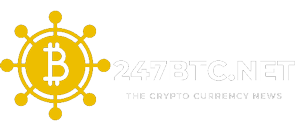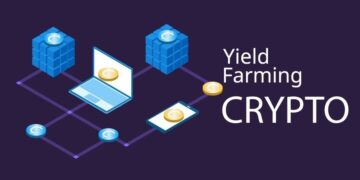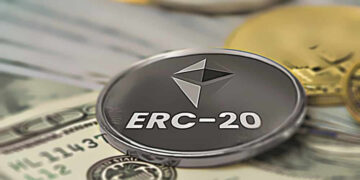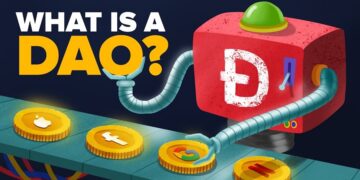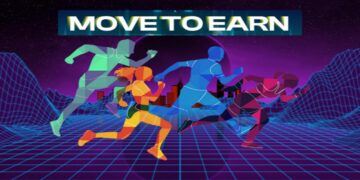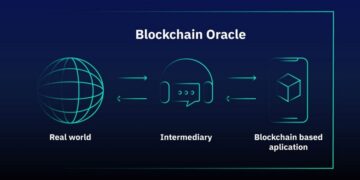ZkEVM is an abbreviation for the term “Zero-Knowledge Ethereum Virtual Machine”. It is a protocol that enables the execution of smart contracts on a public blockchain such as Ethereum.
Table of Contents
ToggleWhat is zkEVM?
zkEVM is the abbreviated term for the phrase “Zero-Knowledge Ethereum Virtual Machine”, which is a protocol that facilitates the execution of smart contracts on several public blockchains such as Ethereum, BNB Chain, Polygon, Avalanche C Chain.
The technology known as zkEVM was developed based on the concept of Zero-Knowledge Proof (ZKP) and was divided into four different types by Vitalik, the founder of Ethereum, based on their compatibility with EVM. While zkEVM has numerous advantages for developers and the zk ecosystem, it still faces several limitations that require resolution.
Overview of zkEVM
In order to gain a comprehensive understanding of zkEVM, it is imperative to first explore the concept of Zero Knowledge Proof (ZKP), which serves as a fundamental component of zkEVM.
What is Zero Knowledge Proof (ZKP)?
The technology known as Zero-Knowledge Proof (ZKP) is a form of encryption that is utilized to safeguard privacy and authenticate transactions on the Internet and various blockchain platforms. Rather than sharing complete information, ZKP technology enables parties to exchange information without revealing specific details about each other.
An example illustrating this is when individual A wishes to verify with an organization that they meet the minimum age requirement of 18 years old to register for a service, but does not desire to disclose their date of birth.
It is plausible to employ the Zero-Knowledge Proof activity to authenticate A’s age by presenting significant additional information that holds similar meaning. For instance:
- A graduated from university (Prove A is about 22 years old).
- A has a B1 driver’s license issued by a competent authority (Prove A is 18 years old).
- A already owns a business registered under his name (Prove A is 18 years old).
In this example, Zero Knowledge Proof (ZKP) allowed Alice to verify her age without disclosing her date of birth, thereby preserving her privacy while enabling the organization to ensure that A meets the minimum age requirement for accessing their services.
According to the technological classification of Zero-Knowledge Proofs (ZKP), the market is primarily familiar with two types: zk-SNARKs and zk-STARKs.
- zk-SNARKs (Zero-Knowledge Succinct Non-Interactive Argument of Knowledge).
- zk-STARKs (Zero-Knowledge Scalable Transparent Argument of Knowledge).
Why was zkEVM born?
Although several ZK programming languages such as Cairo (StarkWare) and Zinc (zkSync) already exist in the market, the ZK programming language still faces significant limitations. One of the most significant barriers is the lack of consistency among these programming languages, posing difficulties for developers when programming across different languages.
For a developer or a newly developing project in the market, focusing on one language such as Cairo or Zinc may result in limiting them to a singular ecosystem, in contrast to the diversity of ecosystems available on EVM language.
The zkEVM was developed to address the prevailing issue. Below are some reasons for the emergence of the zkEVM:
- The zkEVM was designed with the purpose of facilitating compatibility with Ethereum. Consequently, the deployment of smart contracts utilizing ZK Proof technology on Ethereum has become a simpler task.
- The ZkEVM offers a layer of abstraction to developers, facilitating the deployment of ZK applications with ease. As a result, developers are relieved from having to manage low-level intricacies of the ZK algorithm.
- zkEVM provides support for various types of ZK Proofs, including zk-SNARKs and zk-STARKs, which enable developers to choose the most suitable method for their application.
In conclusion, the advent of zkEVM aims to facilitate the deployment of smart contracts using ZK Proof technology on Ethereum and other EVM Chains, providing developers with a more accessible approach.
The operational mechanism of zkEVM
While zkEVM adheres to the same operational principles as ZK-rollups, there are several concepts surrounding its ideal structure and functioning to be noted. It must also be emphasized that the purest version of zkEVM, which is equivalent to Ethereum, does not permit any alterations even when they potentially simplify the process of creating evidence.
Zero-knowledge rollups are a method of completing off-chain transactions in batches and sending a cryptographically secure proof of their accuracy to Ethereum. The zero-knowledge proof does not reveal the details of individual transactions within the batch, but rather confirms that they are accurate enough to trigger a transition to the Ethereum state. This approach provides a secure and efficient way to process large amounts of transactions off-chain while maintaining the integrity of the main blockchain.
Subsequently, it provides valid evidence for a smart contract established on the L1 blockchain. Following receipt and verification, it verifies the inputs with precision.

The zkEVM can be classified according to its compatibility level with EVM
In Vitalik’s article discussing the categorization of zkEVM, he identified four primary types based on their level of compatibility with the EVM. The lowest level of compatibility (EVM compatibility) only provides a certain percentage of compatibility for complex smart contracts. As such, developers may need to customize the source code by copying, pasting, and rewriting some components.
At a higher level of EVM equivalence, these systems offer a greater degree of compatibility, enabling developers to migrate smart contracts from Ethereum to their rollup protocol more easily, quickly, and with minimal modifications (through the use of copy, paste, and edit techniques).

Type 1: zkEVM is fully compatible with Ethereum (Fully Ethereum equivalent)
- It is predicted that zkEVM type 1 will be fully compatible with Ethereum at the consensus level. There are no alterations to the state or Merkel proof, hash function, or any logic in consensus.
- These tokens are completely compatible with all basic Ethereum applications; however, they require longer proof-of-work times, as no improvements have been made to expedite the proof generation process.
Type 2: zkEVM fully compatible with EVM (Fully EVM equivalent)
The zkEVM type 2 will undergo a slight reduction in standards to align with EVM compatibility rather than Ethereum compatibility. These types closely resemble EVM outwardly, but they will undergo minor modifications internally to expedite proof generation and facilitate development. However, it should be noted that certain applications may not be compatible with this type.
However, it should be noted that zkEVM type 2 will still require a longer preparation time. Thus, zkEVM type 2.5 may address this issue by increasing the gas cost in order to improve the preparation time.
Type 3: zkEVM compatible with EVM
The zkEVM of type 3 differs from EVM as it prioritizes the ease of implementing a system similar to EVM in ZK rollups. This involves specific changes aimed at improving ease of construction and enhancing proof generation. Although zkEVM type 3 can be compatible with most applications, some may require rewriting to function properly.
Type 4: zkEVM is roughly compatible with EVM
The fourth type of zkEVM is solely equivalent to high-level programming languages and not to EVM itself. Consequently, omitting the process of providing evidence of knowledge for each stage of EVM execution will decrease costs, encourage delegation, and improve the efficiency of generating evidence.
However, this will result in reduced compatibility of zkEVM Type 4 with certain applications. The contract address may potentially change when migrating an application to EVM, and it may not be possible to transfer to some debugging infrastructure.
The advantages and disadvantages of zkEVM
Advantages of zkEVM
Ability of extension
The zkEVM technology has the potential to enhance the scalability of public blockchains such as Ethereum by reducing the computational resources required to execute smart contracts. This is achieved through the ability to offload computations to private networks, thus alleviating the workload on the public blockchain.
Diversity
The technology known as zkEVM holds the potential for application in a wide variety of industries where the execution of private smart contracts is necessary. For example, healthcare service providers may utilize zkEVM to ensure patient data remains confidential while still allowing access for research and analytics purposes.
EVM Compatibility
The most significant advantage of zkEVM is its compatibility with EVM, which allows developers to seamlessly execute their DeFi protocols on zk platforms while developing on EVM blockchains. This capability not only facilitates the transition of DeFi protocols to zk platforms but also attracts more developers, thereby creating a more diverse ecosystem.
Disadvantages of zkEVM
Complexity
The implementation of zkEVM can be a complex process that requires specialized knowledge and significant resources due to its integration of various technologies.
Limited function
Due to its focus on privacy, zkEVM may be limited in its ability to execute complex functions of smart contracts. For instance, it may not be able to perform features related to regular accounts like voting or transferring funds, and may only concentrate on verifying the validity of a private computation.
Efficiency
Using zkEVM may have an impact on the performance of the network. The computational evidence suggests that it may require a significant amount of computation and network bandwidth, potentially slowing down transaction processing. This can be improved by utilizing optimization techniques and developing more efficient software, but still remains a noteworthy issue.
Consumption of energy
Just like performance, the utilization of zkEVM can result in energy consumption and associated costs while performing computations. This may pose a particular problem for public blockchains where computational activities incur fees in cryptocurrency.
The developmental history and notable milestones of zkEVM
The following are the milestones and historical evolution of zkEVM:
- 12/2017: Zcash introduces zk-SNARKs, a form of Zero-Knowledge Proof that allows proof of information without revealing its contents.
- 2018: zk-STARK was born and developed by Eli-Ben Sasson, professor at Technion-Israel Institute of Technology. He is currently the president of StarkWare.
- 12/2019: Matter Labs introduces zkSync – Layer 2 for Ethereum built on zkRollup and zk-SNARKs.
- 9/2020: Matter Labs introduces zkPorter, a new protocol that uses zk-SNARKs to enhance the scalability of blockchain applications.
- 3/2021: EY (Ernst & Young) – the world’s leading auditing technology introduces the pilot version of Nightfall 3, a technology that is integrated into zkEVM and helps to increase the security of transactions on the Ethereum network.
- 8/2021: Polygon spends $250 million to acquire Hermez to develop zkEVM, later renamed Polygon zkEVM.
5/2022: StarkWare – parent company of StarkEx, StarkNet, Cairo raised $100 million at a valuation of $8 billion. - 11/2022: Matter Labs – zkSync’s parent company developing zkEVM has successfully raised $200 million (Series C), bringing the total raised to $458 million.
- 2/2023: CZ announces that Binance will change Proof of Reserve’s proofing mechanism to zk-SNARKs technology.
- 2/2023: Sroll’s zkEVM solution begins testnet testing on Ethereum.
- 3/2023: Scroll – zkEVM development project calls for 50 million USD with a valuation of 1.8 billion USD.
- 3/2023: ConsenSys – the parent company of Metamask is expected to launch the public testnet for zkEVM in March after announcing the launch of the private testnet in December 2022.
The zkEVM projects are noteworthy
At present, there are six prominent zkEVM projects available in the market, namely:
- Polygon zkEVM: The Polygon zkEVM project is among the newest ventures for Polygon in the area of zkEVM. This project was renamed from Polygon Hermez following a 250 million USD acquisition.
- The zkSync Era is a product developed by Matter Labs in the field of zkEVM. While not the initial endeavor, it is the one that has undergone extensive development to further progress.
- StarkWare is a pioneering company in the field of zero-knowledge technology, having developed a number of products related to zk, such as StarkEx and StarkNet. The company is also a leader in the development of zkSTARK technology, utilizing its own programming language called Cairo. Additionally, StarkWare has created zkEVM to assist in making their language more user-friendly.
- The Scroll project is a decentralized open-source initiative built on the zkEVM platform with the aim of enhancing the security features of blockchain applications.
- Taiko is an open-source project that focuses on the development of a fully compatible solution with Ethereum (Type 1), without any centralized control.
- Linea, formerly known as ConsenSys zkEVM, is a product of ConsenSys, the parent company of Metamask. The focus of Linea is to become a fully compatible solution with EVM (Type 2).
Frequently asked questions regarding zkEVM are evident within the technical community
What is the nature of the relationship between zkEVM and zk-SNARKs, zk-STARKs, zk-SHARKs, and PLONK?
zkEVM has been developed to provide assistance in the deployment of applications on the Ethereum platform, utilizing advanced technologies such as zero-knowledge proofs, including zk-SNARKs, zk-STARKs, zk-SHARKs, and PLONK. These zero-knowledge proof techniques ensure utmost privacy and security when conducting transactions on the Ethereum platform, making it an ideal solution for businesses and individuals who require a secure, decentralized network for their operations.
zkEVM employs these technological architectures to provide security and anonymity features in transactions and applications built on the Ethereum platform. For instance, zk-SNARKs are utilized to conceal sensitive information in an Ethereum transaction without disclosing the specifics, thus enhancing user privacy and security.
Which one is better: EVM compatibility or EVM equivalence?
In terms of compatibility, EVM equivalence demonstrates unparalleled superiority. However, its implementation can be quite demanding. As of present, there are no existing zkEVMs (EVM equivalents) functioning in the mainnet.
On the second note, all the zkEVM protocols aspire to deploy EVM equivalence in the future, albeit their divergent approaches
- Constructing zkEVM (EVM equivalence) from the outset entails significant time and effort, as demonstrated by the Polygon zkEVM, Consensus zkEVM, and Scroll developments.
- The methodology employed for zkSync 2.0 development involves approaching from EVM compatibility and gradually constructing towards EVM equivalence, resulting in a considerably shorter time investment compared to alternative approaches.

Summary
The zkEVM technology presents a novel method of integrating zero-knowledge proofs into the blockchain system. Its potential is significant, promising accelerated transaction speeds and reduced costs on the Ethereum network. Additionally, it can enhance privacy and security for its users. Nonetheless, widespread implementation of zkEVM is still in the developmental stage and requires the collaboration of developers and the community to further its adoption.
What is Yield Farming? Gain a comprehensive understanding of the terminology associated with Yield Farming
The concept of Yield Farming, prominent Yield Farming platforms, and the associated risks and opportunities are explored in this article,...
Read moreWhat is Initial DEX Offering (IDO crypto)? Does playing IDO really give you a 100% chance of winning?
One may inquire as to why the Initial DEX Offering (IDO) has gained widespread popularity and whether investing in IDO...
Read moreWhat is ERC – 20? Advantages, disadvantages & how to create ERC- 20 network tokens
In this article, we will explore ERC-20 and ERC-20 tokens along with their applications and advantages and disadvantages. For those...
Read moreWhat is Airdrop Crypto? Instructions for making airdrop coins in the Crypto market
What is Airdrop and how many forms of Airdrop Crypto exist? Discover the limitations and effective instructions on how to...
Read moreWhat is DAO? Limitations and Investment Potential of DAO in Crypto
Understanding the terminologies used in the field of cryptocurrency is crucial for individuals involved in Crypto market participation or intending...
Read moreWhat is zkEVM? Classification of groups zkEVM
ZkEVM is an abbreviation for the term "Zero-Knowledge Ethereum Virtual Machine". It is a protocol that enables the execution of...
Read moreWhat is web3 technology? How to invest in Web3 in 2023
The emergence of Web 3.0 following Web 2.0 has brought about increased flexibility and superior interaction capabilities compared to its...
Read moreWhat is move to earn? best move to earn crypto in 2023
In the current GameFi market, it is possible to combine the seemingly unrelated tasks of earning money and improving one's...
Read moreWhat does NFT crypto stand for: Clarifying the Significance of Non-Fungible Tokens (NFTs) through technical examination
Non-fungible token (NFT) art are digital assets stored on a blockchain that depict physical or non-physical items, such as digital...
Read moreWhat are play to earn (P2E) Games? How to earn money with play game crypto?
Play to Earn has emerged as a popular trend in mid-2021, leading to a notable increase in the activity of...
Read moreWhat is an oracle in blockchain? Top blockchain oracle projects 2023
The intended function of blockchain technology was never to operate in isolation from the larger economic ecosystem. Despite the challenges...
Read moreBinance account sign up: What is binance account? how to create binance account?
Numerous cryptocurrencies are supported by Binance and its proficiency in ensuring swift exchange operations between volatile coins and fiat currencies...
Read moreWhat is a defining feature of the Metaverse Crypto? What does the term Metaverse refer to?
We have heard numerous prominent figures, such as Mark Zuckerberg, CEO of Facebook, and Satya Nadella, CEO of Microsoft, expound...
Read moreWhat are AI Tokens? Best AI Coins & Tokens to Invest in
The predicted impact of artificial intelligence (AI) is expected to revolutionize various sectors, including the field of cryptocurrency. The AI...
Read moreWhat are Fan Tokens? How Binance Fan Tokens are Revolutionizing the World of Sports and Entertainment?
The Fan Token is a term that has been shared by the CEO of the cryptocurrency exchange CZ on Twitter,...
Read more